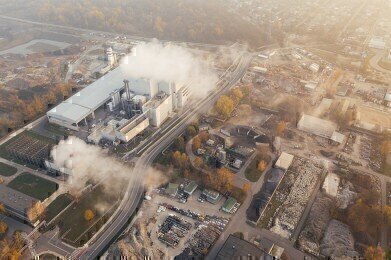Air Clean Up
Why Does Industry Need to Capture Carbon?
May 10 2021
The UK government has signalled its ambition for the country to become carbon neutral by 2050. Given that industry accounts for a significant proportion of Britain’s greenhouse gas emissions, it must take steps to reduce the amount of emissions it produces. Industrial processes have come a long way in this regard over the last three decades, cutting emissions by 83% between 1990 and 2019.
However, there is already too much carbon in our atmosphere for curbing emissions to have a discernible effect on the planet alone. In order to meet the targets outlined at the Paris Climate Summit in December, industries will have to actively capture carbon and remove it from the environment. This can be done in two principal ways: at the point of emissions (carbon capture and storage, or CCS) and by removing CO2 from ambient air (direct-air capture, or DAC).
Meeting targets
Five-and-a-half years ago, political leaders from all over the world convened in the French capital to discuss how they would address the climate crisis. At that historic meeting, it was agreed that national governments would do everything in their power to ensure that global warming did not exceed 1.5°C as a preferable outcome and 2°C as an absolute maximum.
In order to attain those objectives, it will be necessary to ensure that the concentration of carbon in the atmosphere remains stable at around 350 parts per million (ppm). Unfortunately, we have already emitted so much CO2 over the last few centuries that the current concentration is already above the desired level – at around 415ppm – and it’s increasing by approximately 2.5ppm every year.
As such, simply limiting the amount of CO2 we emit will no longer be sufficient to meet our targets. Instead, we must turn to technologies like CCS and DAC which can help to remove some of the carbon already present in the environment and stabilise its concentration once more. However, both processes are currently extremely complicated and expensive, necessitating cumbersome processes like gas purity analysis in order for them to become truly sustainable.
How to make the goals more achievable
Since both CCS and DAC are economically unattractive and not currently mandatory in UK law, there is no concrete incentive for companies to implement them. However, the significant financial outlay that they require can be mitigated via the involvement of carbon capture and usage, or CCU. This process shares the same principles as CCS, but attempts to turn the excess carbon into a commodity rather than a waste product.
The applications to which this CO2 can be put are in development and are as varied as they are multiple. For example, the carbon can be used to create physical products like plastics, tyres and cement; it can be applied to fossil fuel reserves to enhance oil recovery; it can help facilitate the rollout of environmentally friendly refrigeration techniques; and it can be combined with hydrogen to create hydrocarbon fuel sources.
While these are just a few of the possible purposes to which the carbon can be put in order to make it lucrative (and thus offset the costs of implementing the technology in the first place), it should be noted that the amount of carbon we emit far exceeds that which we use. As such, CCU can only ever be an “on ramp” to put in place the infrastructure for CCS and DAC. As a standalone solution, it simply will not suffice.
Events
WEATHER • CLIMATE • WATER / EARTH OBSERVATIONS / GREEN ECONOMY
Oct 29 2024 St. Petersburg, Russia
Oct 30 2024 Hong Kong
Nov 05 2024 Toronto, Canada
Nov 06 2024 Ho Chi Minh City, Vietnam
Nov 12 2024 Valencia, Spain













